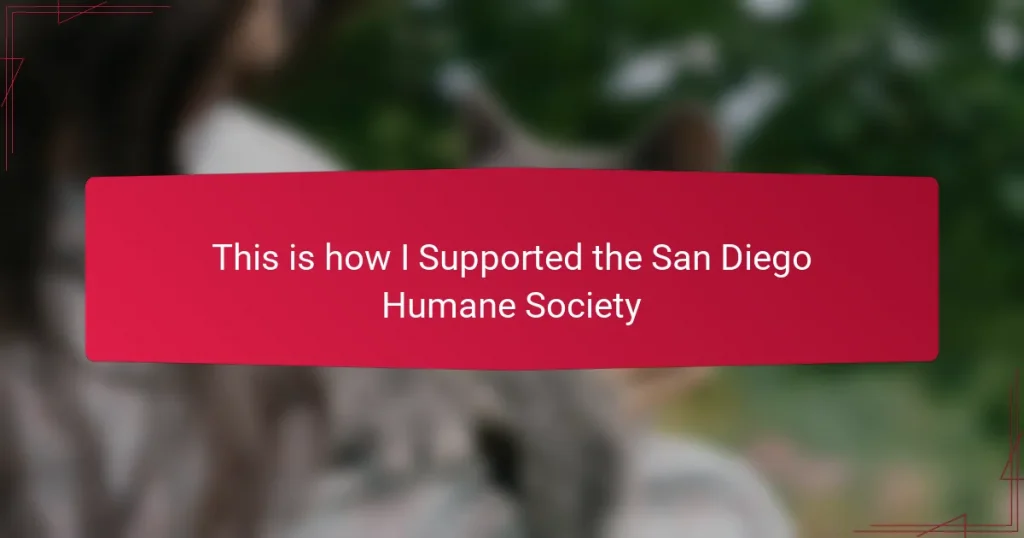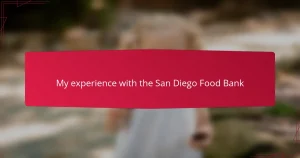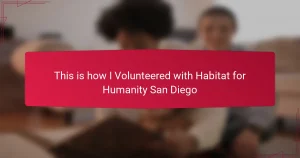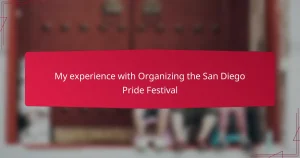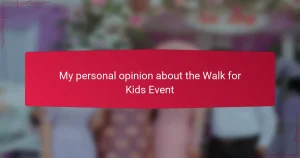Key takeaways
- Family fundraising fosters unity and engagement by rallying around a shared purpose, making participation more meaningful.
- Simple community events, like picnics or casual gatherings, can effectively boost fundraising efforts while building connections.
- Involving family members in planning and executing fundraising tasks enhances teamwork and creates shared emotional experiences.
- Consistency and relationship nurturing are vital for long-term fundraising success, as they transform one-time donors into committed supporters.
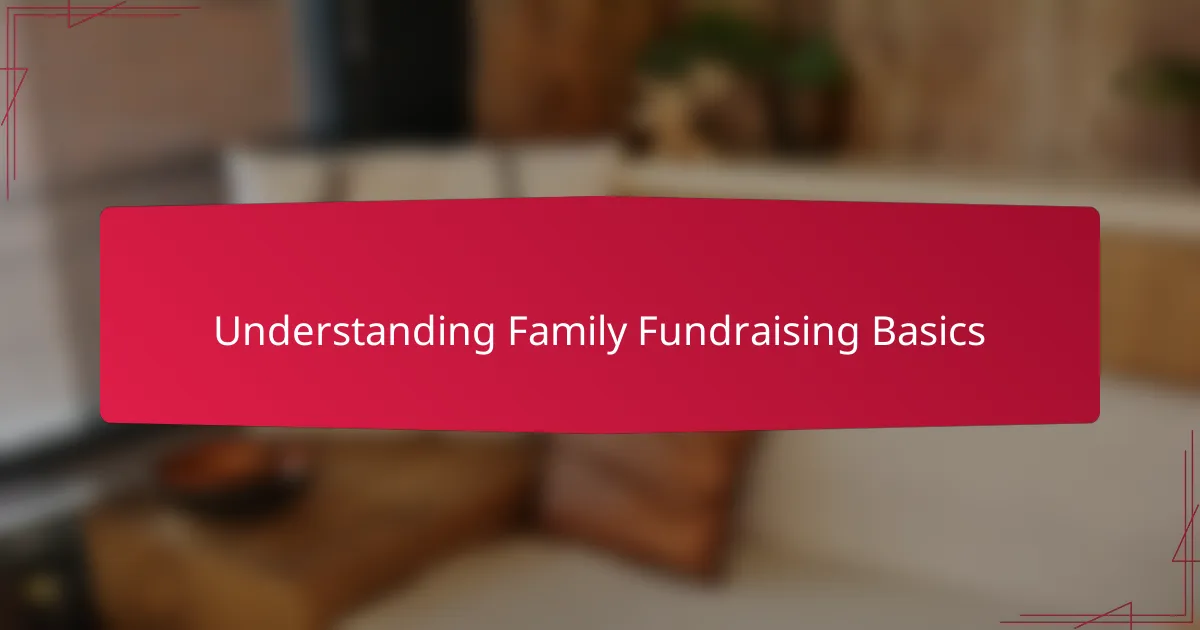
Understanding Family Fundraising Basics
Family fundraising starts with a simple idea: coming together for a cause that matters. From my experience, it’s not just about raising money but building a sense of unity among everyone involved. Have you ever noticed how sharing a common goal can turn neighbors and relatives into a motivated team?
What I found most surprising is how small, consistent efforts add up. Even a modest bake sale or a casual neighborhood event can create momentum. It made me wonder, why do we often underestimate the power of everyday generosity?
At its core, family fundraising thrives on clear communication and shared enthusiasm. When everyone understands the purpose, participation naturally grows. I’ve seen firsthand how explaining the “why” behind a cause can light a spark that keeps people engaged and eager to help.
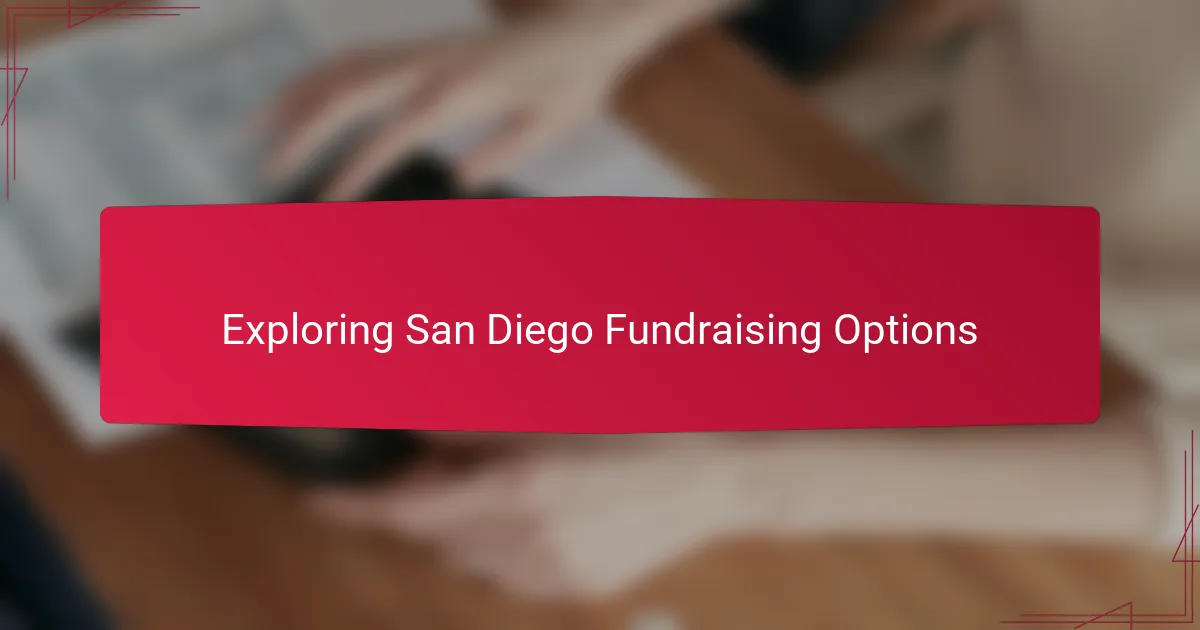
Exploring San Diego Fundraising Options
When I began exploring fundraising options in San Diego, I quickly realized how diverse and creative the opportunities are. Have you ever considered how local events like community runs or neighborhood markets could become powerful fundraising platforms? These options not only bring families together but also connect us with neighbors who share a passion for making a difference.
One thing that stood out to me was the city’s support for various nonprofit initiatives, offering not just venues but also resources to help fundraisers succeed. I found that partnering with local businesses added an unexpected layer of enthusiasm—people love supporting neighbors who are giving back. This community spirit made me think, why not leverage every connection we have to boost our impact?
Sometimes, the best approach is the simplest one. Organizing casual gatherings around a specific cause—like a pet adoption day or a family picnic with a donation booth—can create meaningful fundraising moments. I’ve seen how these low-key events often lead to the most heartfelt support because they feel approachable and inclusive. Have you tried blending fun with purpose in your own fundraising efforts?

Planning a Successful Fundraiser
When I started planning a fundraiser, I quickly learned that setting clear goals makes all the difference. Without knowing exactly what we wanted to achieve—whether it was a certain amount to raise or specific items to collect—the team’s focus wavered. Have you ever tried organizing something without a clear target? It’s like trying to hit a moving bullseye.
Choosing the right date and venue was another important step that I honestly didn’t anticipate. Early on, I picked a weekend that clashed with other local events, and attendance was lower than expected. From my experience, checking the community calendar and thinking about convenience for families can really boost turnout—the more accessible, the better.
Lastly, I found that involving everyone early on created a sense of ownership that kept energy high throughout. When family members and friends helped brainstorm ideas and took on small tasks, it wasn’t just “their fundraiser” anymore. Have you noticed how a shared responsibility brings out creative ideas you might not have thought of alone? This made our planning smoother and, honestly, a lot more fun.

Engaging Your Family in Fundraising
Getting my family involved in fundraising was a game-changer. I noticed that assigning simple roles—like managing social media posts or organizing snacks—gave everyone a sense of purpose. Have you ever seen how even children light up when they realize their small efforts actually matter?
What truly surprised me was how these shared tasks sparked conversations at the dinner table about why we were raising funds. It wasn’t just about the money anymore; it became a family story we all cared about. I started to see fundraising as a unique way to strengthen our bonds while supporting the San Diego Humane Society.
Sometimes, the best way to keep everyone engaged is to create little celebrations for milestones. After reaching a fundraising target, we’d gather for a movie night or a walk in the park with our pets. These moments made me realize that involving family is not just practical—it’s deeply rewarding on an emotional level. Have you tried turning fundraising into a family tradition yet?

Organizing Events for the Humane Society
One of the most rewarding parts of organizing events for the Humane Society was seeing the community come alive around a shared love for animals. I remember hosting a small pet-friendly picnic in our local park, and watching kids, parents, and even strangers bond over furry friends felt incredibly meaningful. Have you ever noticed how animals can bring people together in ways nothing else can?
I quickly learned that planning the event’s flow—like scheduling short activities, setting up donation stations, and coordinating volunteers—makes all the difference. When I assigned roles clearly, everything ran smoothly, and the energy stayed high throughout the day. It made me appreciate how much teamwork behind the scenes influences the success of any fundraiser.
What surprised me most was how flexible these events can be. One year, a casual dog walk turned into an impromptu mini adoption fair when local shelters joined in. It showed me that leaving room for spontaneity can create unforgettable moments—and opportunities to connect even deeper with the cause. Have you ever thought about letting your events evolve naturally like that?

Personal Stories of Support
One of my most memorable experiences supporting the San Diego Humane Society was when my kids and I spent an afternoon assembling care packages for the animals. Watching their faces light up as they understood how those little actions could bring comfort to pets in need made me realize how personal and impactful these moments can be. Have you ever seen pure joy in a child’s eyes simply by lending a helping hand?
Another time, a friend shared how she dedicated a weekend to fostering a rescued dog, and the bond they formed was life-changing. It struck me how giving time—not just money—can create deep connections that fuel ongoing support. Isn’t it amazing how these stories remind us that every contribution has a heart behind it?
Reflecting on these personal stories, I see a pattern: authentic support always grows from genuine care and experience. When we invest not only resources but emotions, our efforts become more than fundraising—they become a shared journey. How do your own experiences shape the way you support causes close to your heart?

Tips for Long-Term Fundraising Success
What I’ve found essential for long-term fundraising success is consistency. Regular, small actions—like monthly donation drives or quarterly family meetups—build momentum that lasts. Have you noticed how steady effort often outperforms occasional big pushes? I certainly have.
Another tip that’s helped me is nurturing relationships beyond the event itself. Keeping in touch with supporters through simple updates or thank-you notes transforms one-time donors into lifelong champions. It makes me wonder, how often do we pause to appreciate those who already believe in our cause?
Lastly, I’ve learned that flexibility is key. Sometimes plans shift, or interest wanes, and adapting your approach keeps enthusiasm alive. When I pivoted from formal events to casual gatherings, our family’s energy—and the funds—actually increased. Isn’t it empowering to know that success can come from being open and responsive?
